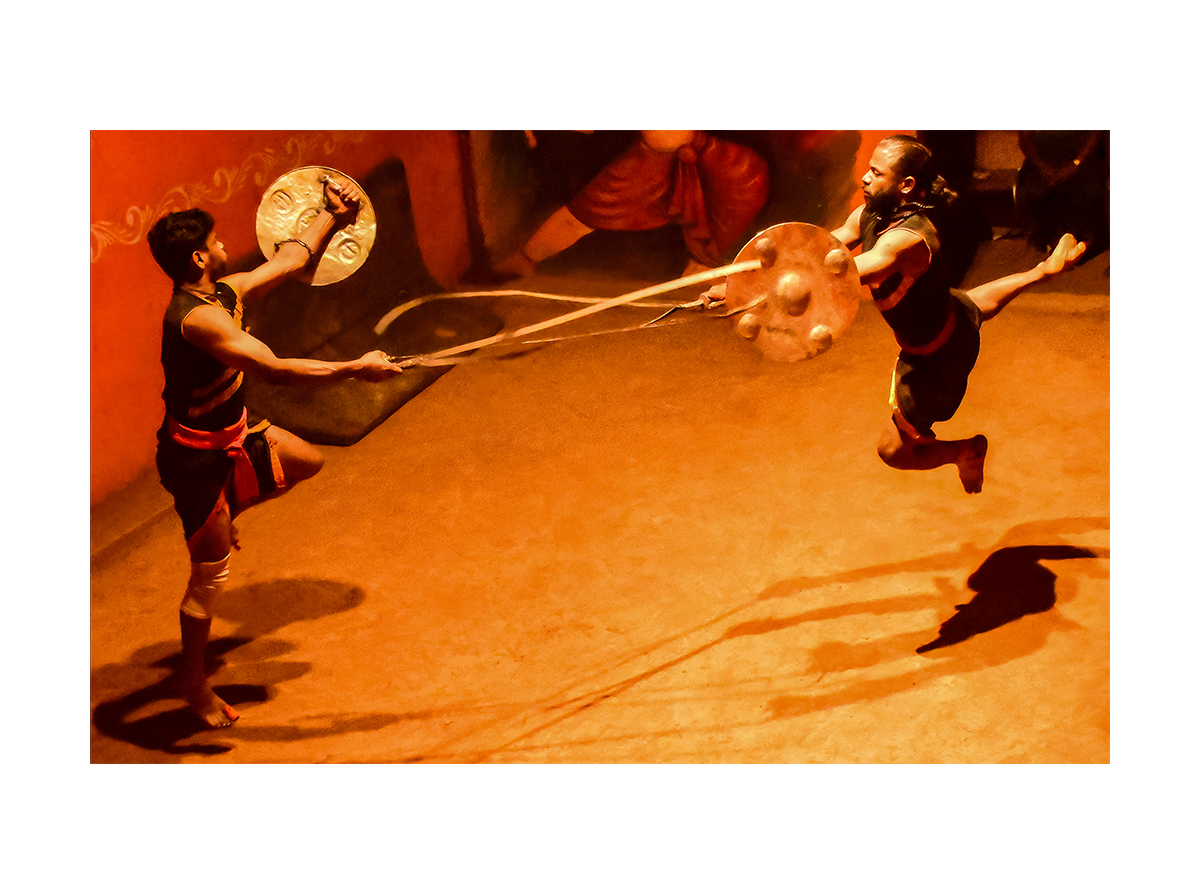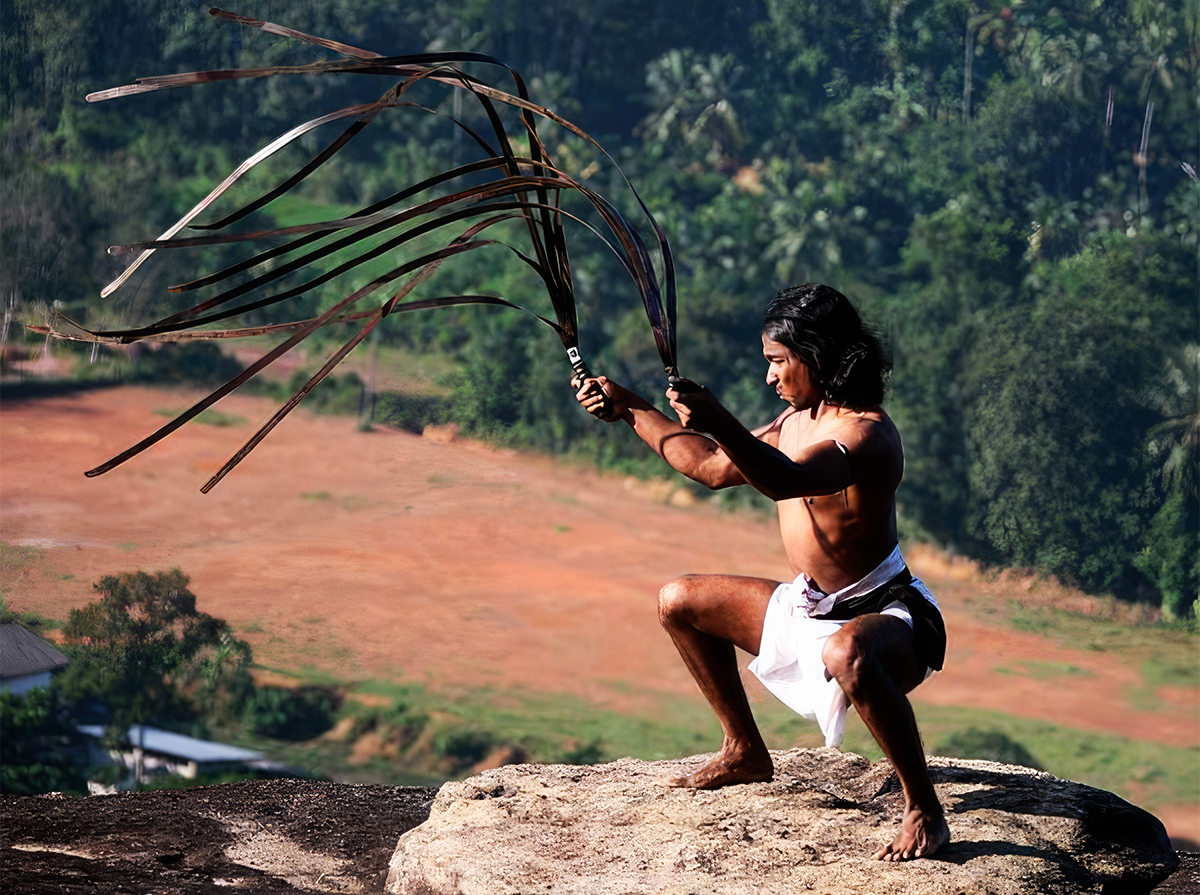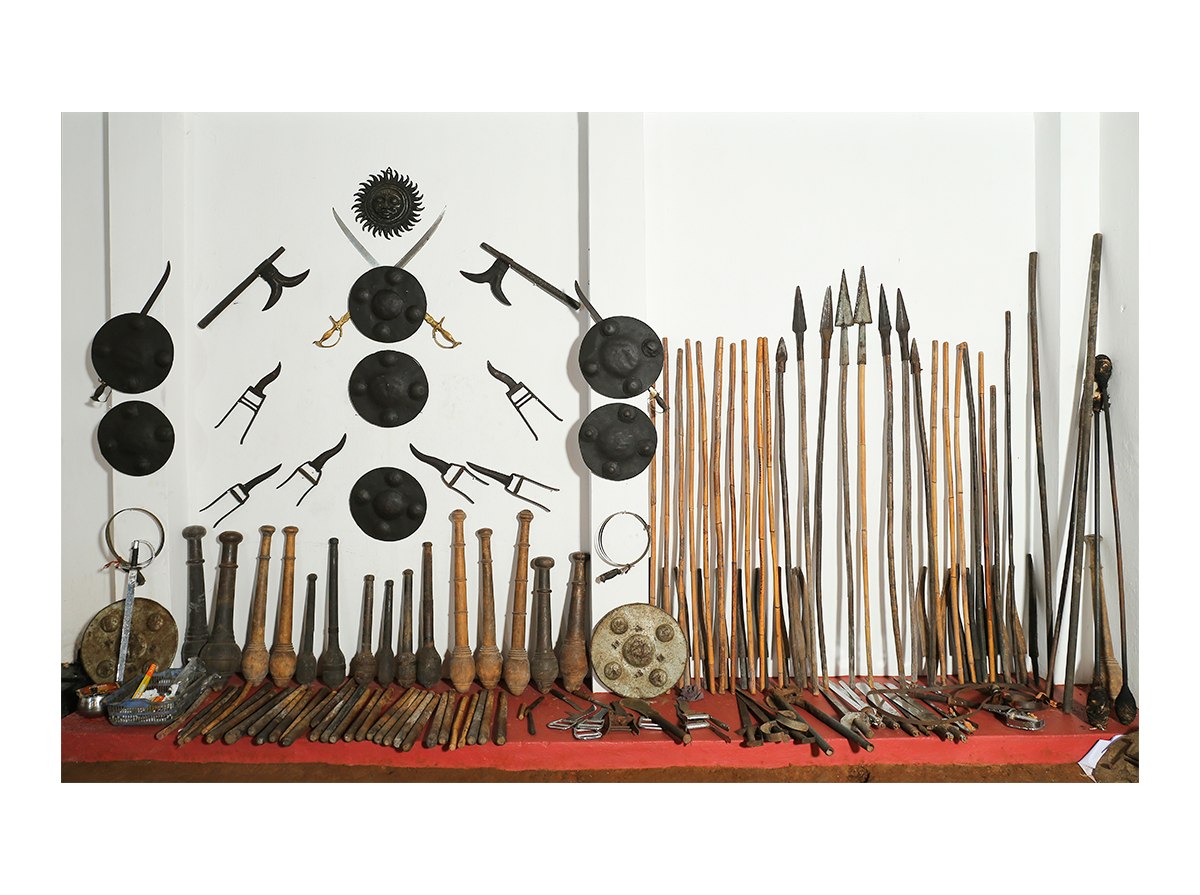ARTICLE
Urumi
A whip-like sword originating in southern India, the urumi is also known as chuttuval or surul val, literally ‘coiling sword’ in Malayalam and Tamil respectively, or ethunu kaduwa in Sinhala. The weapon comprises a long double-edged blade made of flexible steel attached to a hilt. Believed to have been used in battle first between the fourth and second century BCE during the Sangam period, it fell out of use and was eventually revived through the performative martial arts tradition Kalaripayattu. Today it features in martial art training and performances chiefly in Kerala and Sri Lanka.
The blade of the urumi is usually 1.5 to 2 metres long and about 2.5 centimetres wide, and is traditionally made by compressing thin metal sheets together. It is attached at one end to a brass or iron hilt about 9 centimetres long and often fitted with a curving crossguard and knuckle guard. The sword is typically carried with the blade tightly coiled, or wrapped around the waist like a belt. An urumi may also have multiple blades, with a Sri Lankan urumi featuring up to thirty-two blades attached to one hilt.
The urumi is most often used by whipping the sword in a circular or figure-eight motion at a consistent pace in front of the body, to ensure that the blades do not injure the person wielding the weapon. This is performed by experienced Kalaripayattu practitioners in pairs, armed with shields to defend themselves. Use of the urumi is introduced as one of the most advanced stages in Kalaripayattu training as the whip-like blade is very difficult to master. While the urumi can severely injure an opponent, even curling around the edge of the shield, improper usage can also be dangerous for the user. Students of Kalaripayattu begin urumi training by using a piece of cloth to practise the whipping technique required to use the sword.
While the extent of its historic use in actual martial combat is not known, it is presumed that it was probably used chiefly as a defensive weapon, its dangerous movement making it difficult for an opponent to approach. The urumi was incorporated into the present form of Kalaripayattu as part of the 1920s revival of the martial art by pioneering exponents CV Narayanan Nayar and Kottakkal Karnaran Gurukkal. Such efforts promoting various southern Indian traditions as a reaction to colonial rule succeeded in reviving various ancient knowledge systems, combining and organising them into healing and performative techniques that are extensively practised today.
Bibliography
Grundhauser, Eric. “India’s Deadly, Flexible Whip Sword Takes Years to Master.” Atlas Obscura,
September 30, 2016. Accessed July 13, 2023. https://www.atlasobscura.com/articles/indias-deadly-flexible-whip-sword-takes-years-to-master.
Kerala Tourism. “Urumi.” Kalaripayattu: Angathari. n.d. Accessed July 13, 2023. https://www.keralatourism.org/kalaripayattu/angathari/urumi.
Luijendijk, D. H. Kalarippayat: India’s Ancient Martial Art. United States: Paladin Press, 2005.
Mickov, David, and Juliana Cummings (ed.). “The Whip Sword (Urumi): The World’s Most Bizzare Weapon.” Sword Encyclopedia, December 8, 2022. Accessed July 13, 2023. https://swordencyclopedia.com/indian-whip-sword/.
Zarrilli, Phillip B. When the Body Becomes All Eyes: Paradigms, Discourses and Practices of Power in Kalarippayattu, a South Indian Martial Art. Delhi: Oxford University Press, 1998.









